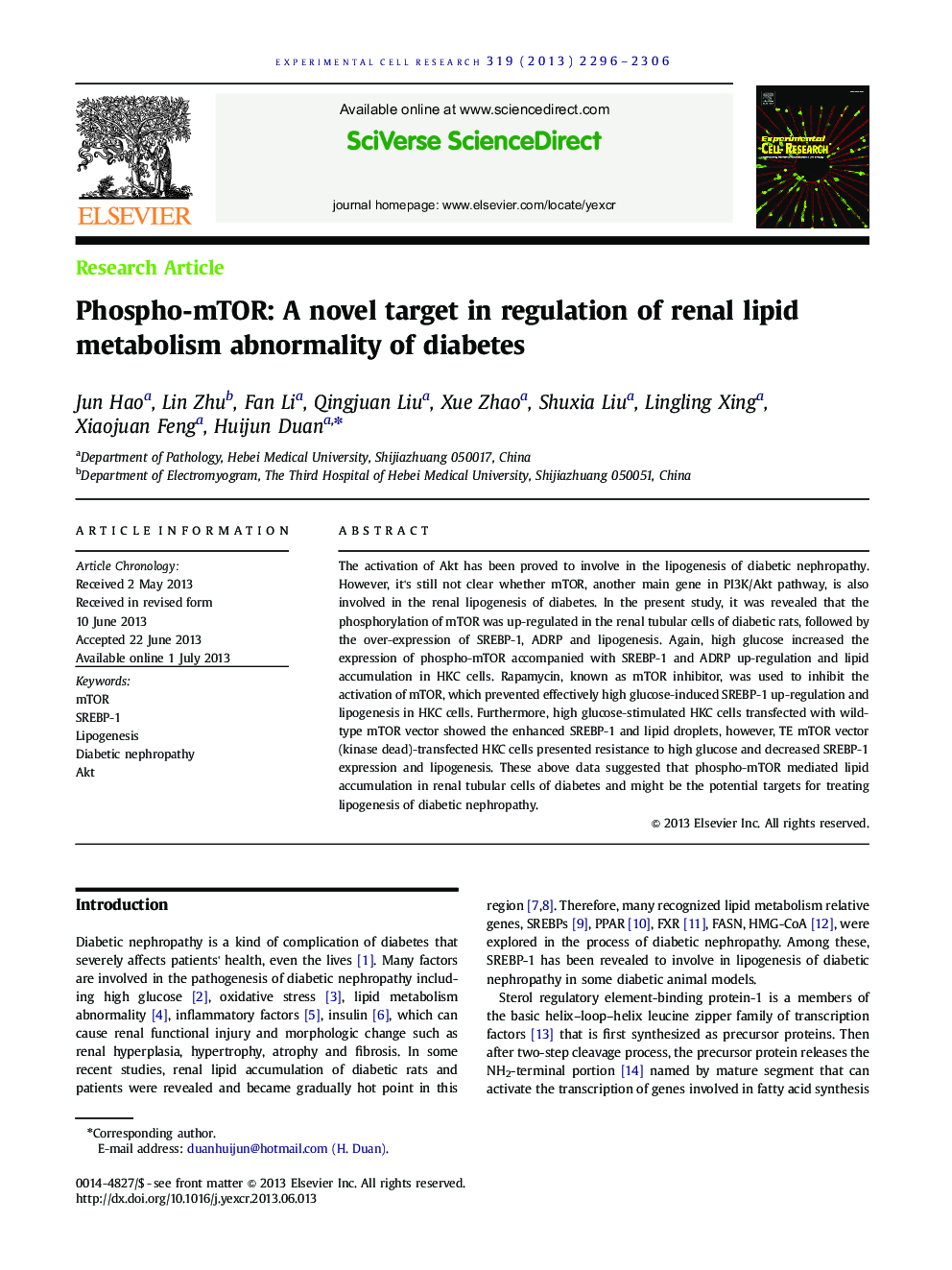| Article ID | Journal | Published Year | Pages | File Type |
|---|---|---|---|---|
| 10904296 | Experimental Cell Research | 2013 | 11 Pages |
Abstract
The activation of Akt has been proved to involve in the lipogenesis of diabetic nephropathy. However, it's still not clear whether mTOR, another main gene in PI3K/Akt pathway, is also involved in the renal lipogenesis of diabetes. In the present study, it was revealed that the phosphorylation of mTOR was up-regulated in the renal tubular cells of diabetic rats, followed by the over-expression of SREBP-1, ADRP and lipogenesis. Again, high glucose increased the expression of phospho-mTOR accompanied with SREBP-1 and ADRP up-regulation and lipid accumulation in HKC cells. Rapamycin, known as mTOR inhibitor, was used to inhibit the activation of mTOR, which prevented effectively high glucose-induced SREBP-1 up-regulation and lipogenesis in HKC cells. Furthermore, high glucose-stimulated HKC cells transfected with wild-type mTOR vector showed the enhanced SREBP-1 and lipid droplets, however, TE mTOR vector (kinase dead)-transfected HKC cells presented resistance to high glucose and decreased SREBP-1 expression and lipogenesis. These above data suggested that phospho-mTOR mediated lipid accumulation in renal tubular cells of diabetes and might be the potential targets for treating lipogenesis of diabetic nephropathy.
Related Topics
Life Sciences
Biochemistry, Genetics and Molecular Biology
Cancer Research
Authors
Jun Hao, Lin Zhu, Fan Li, Qingjuan Liu, Xue Zhao, Shuxia Liu, Lingling Xing, Xiaojuan Feng, Huijun Duan,
